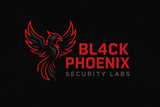Beyond Defaults: Unlocking TerraMaster NAS Full-Disk Encryption

In the realm of personal and small-business data storage, Network Attached Storage (NAS) devices have become ubiquitous. They offer convenient, centralized access to files, but the fundamental security of the data stored on them is often an afterthought, or worse, overlooked by manufacturers.
A recent discussion within the Linux administration community highlighted a significant point of concern and an ingenious workaround: the absence of built-in full-disk encryption (FDE) on TerraMaster NAS devices running TOS 5.x, and how advanced users can implement it themselves.
The Oversight: No Default FDE in TerraMaster TOS
Many users assume that a modern NAS, especially one designed for data management, would offer robust encryption options out-of-the-box. However, as one Reddit user discovered firsthand, TerraMaster's TOS 5.x, at least in its default configuration, does not provide an integrated solution for full-disk encryption. This means that if a physical NAS device were to be stolen or compromised, its contents would be directly accessible to anyone with physical access to the drives.
For organizations and individuals handling sensitive data, this oversight presents a critical security vulnerability. Data at rest is just as vulnerable as data in transit if not properly protected.
The Unconventional Solution: SSH and LUKS
The ingenuity of the Linux community often shines brightest when faced with such limitations. The solution, it turns out, lies in leveraging SSH access to the TerraMaster device and employing standard Linux disk encryption tools, specifically LUKS (Linux Unified Key Setup).
LUKS provides a standard for disk-encryption on Linux, offering strong cryptographic protection for block devices. By accessing the NAS via SSH, administrators can manually configure LUKS on their storage drives, essentially layering a robust encryption scheme beneath the NAS operating system.
The "Blind Spot" Explained
One of the most intriguing aspects of this approach, as the original poster "learned the hard way," is how TerraMaster's TOS interacts with a LUKS-encrypted array. The WebUI, designed to manage unencrypted volumes, is unable to "see" through the LUKS layer. This means the beautifully encrypted RAID array appears invisible or unformatted to the graphical interface.
Initially, this might seem like a problem, suggesting incompatibility. However, a deeper analysis reveals that it's often not an issue for functionality. The underlying Linux kernel still recognizes the LUKS device, and once unlocked (typically during boot or manually via SSH), the decrypted volume can be mounted and used by the operating system, just as any other block device. The TOS WebUI simply lacks the intelligence to represent this complex, layered setup, continuing to operate on the assumption of direct access to unencrypted partitions.
This "blind spot" highlights a philosophical divide: the user who prefers vendor-supported simplicity versus the power user who demands control and advanced security, even if it means stepping outside the vendor's GUI. For security-conscious administrators, the fact that the WebUI can't "see" the encrypted layer is a minor inconvenience compared to the peace of mind offered by FDE.
Implications for Data Security and Device Management
Implementing LUKS encryption on a TerraMaster NAS, while technically feasible, introduces several important considerations:
- Manual Unlocking: The encrypted volumes will need to be unlocked, typically with a passphrase, during each boot. This might require manual intervention via SSH, especially after a power cycle or reboot.
- Recovery Challenges: If the NAS operating system becomes corrupted or the device fails, recovering data from a manually encrypted array requires a deeper understanding of LUKS and Linux disk management. Standard recovery tools might not work as expected.
- Performance Overhead: While modern CPUs often have hardware acceleration for AES encryption, there will be some performance overhead associated with on-the-fly encryption and decryption.
- Vendor Support: This method is entirely unsanctioned by TerraMaster. Any issues arising from manual encryption will likely void warranty claims related to storage or software and will not be supported by their technical staff.
Despite these challenges, the ability to add FDE transforms the security posture of the NAS. It shifts the protection from relying solely on network access controls to safeguarding the data itself, even if the device falls into unauthorized hands. For Bl4ckPhoenix Security Labs, this exemplifies proactive security engineering – taking control where vendor offerings fall short.
A Call for Better Defaults
The need for users to implement such workarounds underscores a broader industry challenge: security should not be an optional, hidden, or difficult-to-configure feature. Core protections like full-disk encryption should be standard and easily configurable from the outset, especially for devices designed to store valuable personal and business data.
This community discovery serves as a powerful reminder of the importance of SSH access and the underlying Linux operating system in many consumer-grade appliances. It empowers users to harden their systems beyond default settings, transforming a potential vulnerability into a fortified data repository.
As Bl4ckPhoenix Security Labs continues to advocate for robust cybersecurity practices, this scenario highlights the critical role of user vigilance and the power of open-source tools in bridging security gaps left by proprietary solutions. While the "hard way" might lead to learning, it also points to a path where manufacturers could prioritize security by design.




